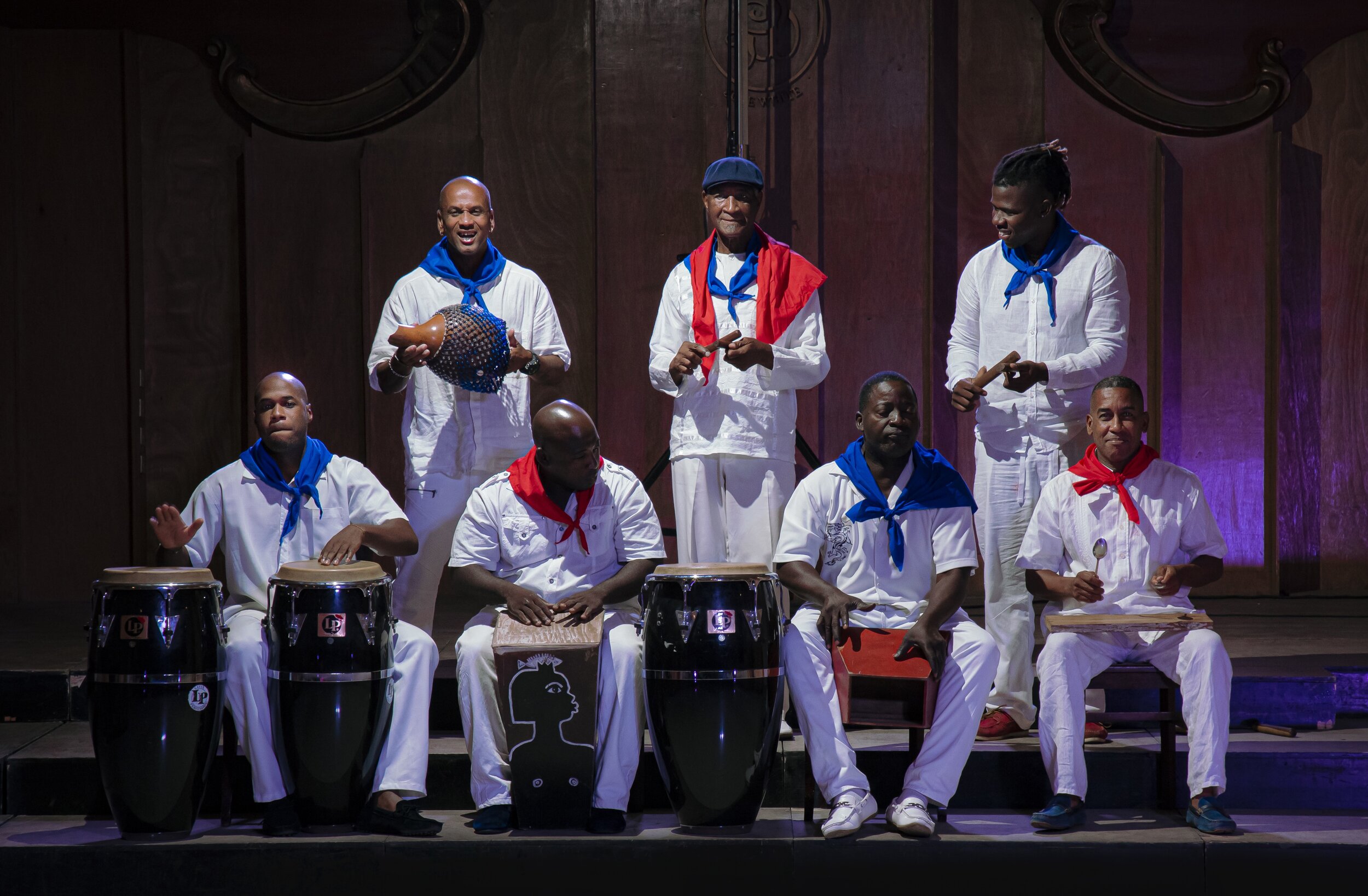
Ritmos Unidos Productions in collaboration with El Almacén is thrilled to present Los Bandos - Rumba en Cazuela, featuring master rumberos performing traditional 100-year-old rumbas from the city of Matanzas, Cuba. Now a contemporary international phenomenon, rumba has its origins in the Cuban docks and street music of the early twentieth century. Los Bandos is a concert/documentary about those origins that features the very best singers and dancers, including many of the premiere artists throughout the years from Los Muñequitos de Matanzas and Afro-Cuba de Matanzas!
Scroll down for the trailer and the history of the project.
Photos by Jordano Sabater Blanco
Los Bandos: Rumba en Cazuela is a project dedicated to documenting the rumbas from over one hundred years ago that were a foundational part of the cultural fabric of the city of Matanzas, Cuba. The two groups, “El Bando Rojo” and “El Bando Azul,” take their names from their respective musical community settings where los Matanceros (people from Matanzas) would share a meal, socialize and then begin to play rumba until dawn the next morning. These bands, known in Spanish as “Los Bandos,” were formed in 1910. Soon thereafter their traditions became codified through New Year’s activities, which would culminate in going from house to house singing rumbas, drinking rum and entertaining their fellow rumberos throughout the city.
The importance of Los Bandos to “la historia de la rumba” (the history of rumba) cannot be overemphasized, since the rumbas that they sang 100 years ago gave birth to the songs and rhythmic forms of professional folkloric groups from the “Atenas de Cuba” (the Athens of Cuba) such as “El Guaguancó Matancero,” “Los Muñequitos de Matanzas,” and “Afro-Cuba de Matanzas,” all of which are now internationally recognized.
The birth of this project came out of Michael’s relationship with his madrina (godmother) from the Afro-Cuban Ocha tradition, Dolores Pérez Herrera. Dolores is the ultimate rumbera—she was immersed in “la cultura rumbera” (rumba culture) from birth, and hence was exposed to the music of Los Bandos since childhood. Furthermore, she spent her entire professional life as a principal dancer and singer in the world–renowned group “Afro-Cuba de Matanzas.” The mission statement of that group has always been to preserve the cultural heritage of Matanzas, and so she had performed and recorded many of these songs as part of her professional artistry. After hearing Dolores sing “Pa’ Los Mayores” on an Afro-Cuba de Matanzas recording many years ago, Michael became intent on embarking on a project to preserve as much of that repertoire as his madrina could remember. She enthusiastically agreed to the idea, and they both approached Luis Cancino to see if he would be willing to participate in the project as the musical producer. Cancino was the logical choice for this role, since he had known Dolores from birth, had been in Afro-Cuba de Matanzas with her for many years, and was the current musical director of Los Muñequitos de Matanzas. Furthermore, he and Michael had become close friends in the late 1980s, and their mutual respect was a critical underpinning to the success of the project. When Luis agreed, the project was officially launched.
Michael brought Joe on board as co-producer, and contacted his friend Luis Bran of El Almacén to do the recording and engineering. El Almacén is an artistic collective in the city of Matanzas that consists of highly skilled artists, recording engineers and videographers. Their quest is to document a myriad of artistic forms within the city. Luis convinced Michael and Joe to film the process as well as to record it, and he also agreed to oversee the pre-production process since they were in the United States. In turn, Dolores and Luis set about selecting repertoire and the accompanying performing artists. Their first call was to El Niño (Rafael Pujada), the lead singer of Los Muñequitos for many decades. He would provide the perfect foil to Dolores’ voice and is also of her generation, for whom the tradition of Los Bandos is not an entirely distant memory. From there, the undertaking truly became a family affair—without exception, every single person in this project is either related by blood, or grew up in the same barrio with this extended family. These are brothers, sisters, aunts and uncles, nephews and grandchildren, all gathered here to play, sing, and celebrate their shared culture!
It soon became apparent to us all that the modern approach to recording would not be the best tactic for this endeavor—instead of recording a small number of artists and overdubbing many tracks, we realized the necessity to form a “coro folklórico” and record everything live. Furthermore, the project needed to be true to its roots, and so, instead of conga drums and modern percussion, we would primarily use the old-school cajones (wooden boxes) as the basis for the percussion, and augment with the occasional tumbadora. We would find a large room, put everyone together, and hit the record button. Although we did do some post-production work, what you see and hear is live and in living color—almost no editing, no smoke and mirrors—real people playing and singing in real time!
Joe and I are very proud to have partnered with El Almacén to produce this project. We think it is artistically beautiful, historically invaluable and culturally profound, and we truly believe it will stand the test of time. We want to specifically thank Luis Bran, Aliesky Pérez, Orlando Álvarez, Odalys Fuentes, and Juan García for going above and beyond with their contributions and assistance. We hope you get as much pleasure watching and listening to this concert as we did producing it.


